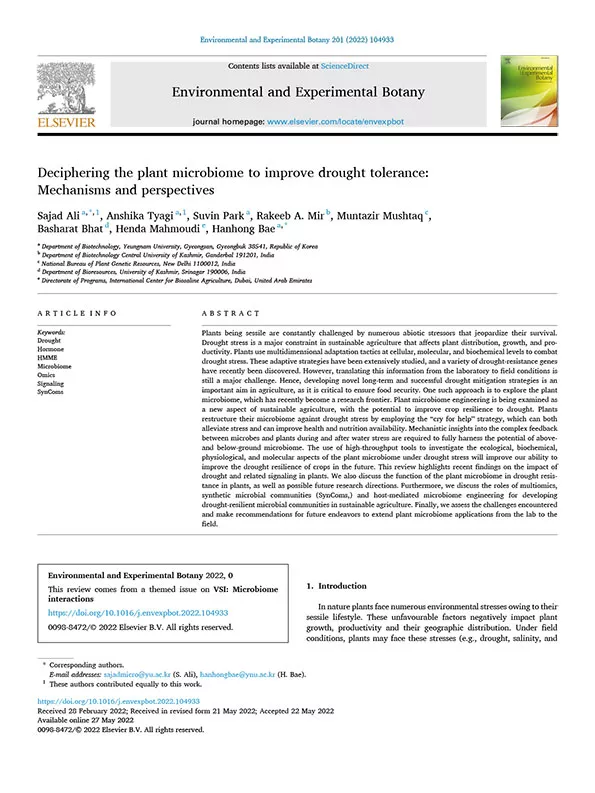Deciphering the plant microbiome to improve drought tolerance: Mechanisms and perspectives
Plants being sessile are constantly challenged by numerous abiotic stressors that jeopardize their survival. Drought stress is a major constraint in sustainable agriculture that affects plant distribution, growth, and productivity. Plants use multidimensional adaptation tactics at cellular, molecular, and biochemical levels to combat drought stress. These adaptive strategies have been extensively studied, and a variety of drought-resistance genes have recently been discovered. However, translating this information from the laboratory to field conditions is still a major challenge. Hence, developing novel long-term and successful drought mitigation strategies is an important aim in agriculture, as it is critical to ensure food security. One such approach is to explore the plant microbiome, which has recently become a research frontier. Plant microbiome engineering is being examined as a new aspect of sustainable agriculture, with the potential to improve crop resilience to drought. Plants restructure their microbiome against drought stress by employing the “cry for help” strategy, which can both alleviate stress and can improve health and nutrition availability. Mechanistic insights into the complex feedback between microbes and plants during and after water stress are required to fully harness the potential of above- and below-ground microbiome. The use of high-throughput tools to investigate the ecological, biochemical, physiological, and molecular aspects of the plant microbiome under drought stress will improve our ability to improve the drought resilience of crops in the future. This review highlights recent findings on the impact of drought and related signaling in plants. We also discuss the function of the plant microbiome in drought resistance in plants, as well as possible future research directions. Furthermore, we discuss the roles of multiomics, synthetic microbial communities (SynComs,) and host-mediated microbiome engineering for developing drought-resilient microbial communities in sustainable agriculture. Finally, we assess the challenges encountered and make recommendations for future endeavors to extend plant microbiome applications from the lab to the field.
Year
2022
Publication Source
Environmental and Experimental Botany
Publication type
Scientific Paper
Volume/Chapter/Issue
201











